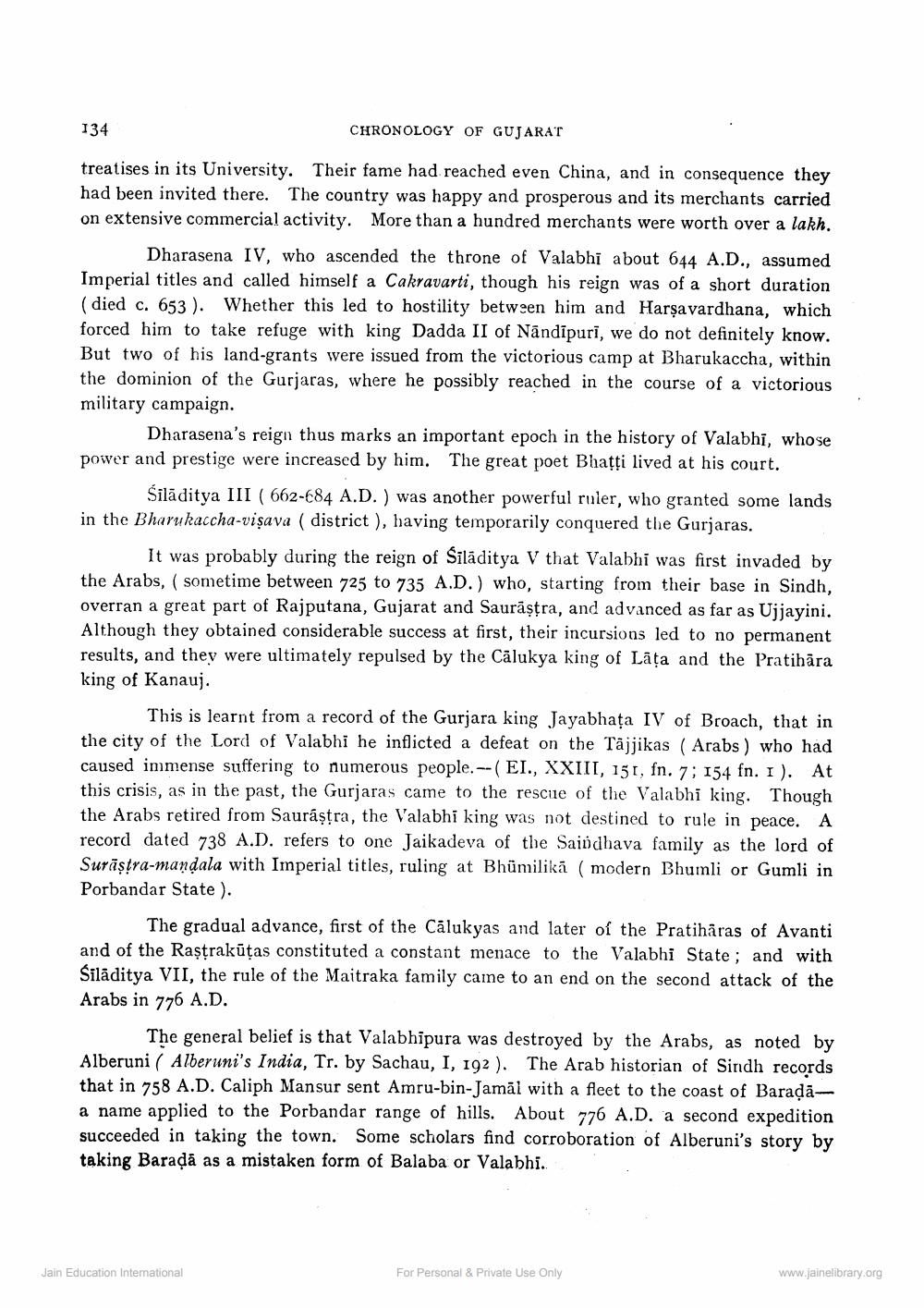________________
134
CHRONOLOGY OF GUJARAT
treatises in its University. Their fame had reached even China, and in consequence they had been invited there. The country was happy and prosperous and its merchants carried on extensive commercial activity. More than a hundred merchants were worth over a lakh.
Dharasena IV, who ascended the throne of Valabhi about 644 A.D., assumed Imperial titles and called himself a Cakravarti, though his reign was of a short duration (died c. 653). Whether this led to hostility between him and Harşavardhana, which forced him to take refuge with king Dadda II of Nāndīpuri, we do not definitely know. But two of his land-grants were issued from the victorious camp at Bharukaccha, within the dominion of the Gurjaras, where he possibly reached in the course of a victorious military campaign.
Dharasena's reign thus marks an important epoch in the history of Valabhi, whose power and prestige were increased by him. The great poet Bhatti lived at his court.
Šilāditya III ( 662-684 A.D.) was another powerful ruler, who granted some lands in the Bharukaccha-vişava ( district ), having temporarily conquered the Gurjaras.
It was probably during the reign of Sīlāditya V that Valabhi was first invaded by the Arabs, ( sometime between 725 to 735 A.D.) who, starting from their base in Sindh, overran a great part of Rajputana, Gujarat and Saurāṣtra, and advanced as far as Ujjayini. Although they obtained considerable success at first, their incursions led to no permanent results, and they were ultimately repulsed by the Cālukya king of Lāța and the Pratihāra king of Kanauj.
This is learnt from a record of the Gurjara king Jayabhata IV of Broach, that in the city of the Lord of Valabhi he inflicted a defeat on the Tajjikas (Arabs ) who had caused immense suffering to numerous people. -- (EI., XXIII, 151, fn. 7; 154 fn. I). At this crisis, as in the past, the Gurjaras came to the rescue of the Valabhi king. Though the Arabs retired from Sauráștra, the Valabhi king was not destined to rule in peace. A record dated 738 A.D. refers to one Jaikadeva of the Saindhava family as the lord of Surastra-mandala with Imperial titles, ruling at Bhümilikā (modern Bhumli or Gumli in Porbandar State).
The gradual advance, first of the Cālukyas and later os the Pratihāras of Avanti and of the Raştrakūtas constituted a constant menace to the Valabhi State ; and with Silāditya VII, the rule of the Maitraka family came to an end on the second attack of the Arabs in 776 A.D.
The general belief is that Valabhipura was destroyed by the Arabs, as noted by Alberuni ( Alberuni's India, Tr. by Sachau, I, 192 ). The Arab historian of Sindh records that in 758 A.D. Caliph Mansur sent Amru-bin-Jamāl with a fleet to the coast of Baradaa name applied to the Porbandar range of hills. About 776 A.D. a second expedition succeeded in taking the town. Some scholars find corroboration of Alberuni's story by taking Baraļā as a mistaken form of Balaba or Valabhi.
Jain Education Interational
For Personal & Private Use Only
www.jainelibrary.org




